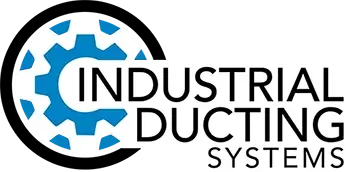Building Products Manufacturing Ducting Solutions
Building products manufacturing encompasses a diverse range of operations producing structural materials like steel beams, concrete products, and engineered lumber, as well as envelope materials including insulation, siding, roofing materials, and windows. These facilities face significant air quality challenges due to the variety of materials processed and the scale of operations required to meet construction industry demands.
Manufacturing processes generate multiple types of airborne contaminants including silica dust from concrete and masonry products, wood dust from lumber processing, metallic particles from steel fabrication, and chemical emissions from composite material production. Many facilities operate multiple production lines simultaneously, creating complex ventilation requirements that must address different contaminant types and concentrations.
The industry faces increasing regulatory pressure regarding silica exposure, with OSHA's updated silica standard requiring enhanced exposure monitoring and control measures. Additionally, the trend toward sustainable building materials has introduced new manufacturing processes that may generate previously unencountered airborne contaminants.
Specific Air Quality Requirements & Regulations
Building products manufacturers must comply with OSHA's respirable crystalline silica standard (29 CFR 1926.1153), which establishes a permissible exposure limit of 50 micrograms per cubic meter averaged over an 8-hour period. This regulation significantly impacts concrete, masonry, and mineral wool production facilities.
Wood products manufacturers must address OSHA's wood dust standard, which requires engineering controls when 8-hour time-weighted average exposures exceed 5 mg/m³ for softwood and 1 mg/m³ for hardwood. The EPA's NESHAP standards also regulate formaldehyde emissions from composite wood products manufacturing.
Steel fabrication operations must comply with metal-specific exposure limits, including iron oxide (10 mg/m³) and various alloying elements. Welding operations require compliance with 29 CFR 1910.252, mandating local exhaust ventilation for enclosed spaces and specific materials like stainless steel.
Temperature requirements vary significantly across building products manufacturing. Steel fabrication may involve processes exceeding 2000°F, requiring refractory-lined ductwork. Concrete curing operations typically operate at 150-200°F, while composite material production may involve temperatures up to 400°F during curing processes.
Construction Process & System Design Considerations
Building products manufacturing facilities typically feature large, open production areas with high ceilings and multiple emission sources. Ducting system design must accommodate heavy equipment movement, including overhead cranes and forklifts, while providing effective capture at numerous workstations.
The construction process begins with comprehensive source evaluation to identify all emission points and determine optimal capture strategies. Primary collection systems often utilize large-diameter main trunks with multiple branch connections to individual production stations. Flexible joints at equipment connection points are necessary to absorb thermal expansion and vibration.
Silica dust control systems require specialized design considerations including high-velocity capture (minimum 500 FPM face velocity) and dust-tight construction to prevent leakage. Ductwork must incorporate cleanout access points and may require wear-resistant linings in high-abrasion areas.
Installation sequencing is critical in active manufacturing facilities, often requiring phased construction to maintain production continuity. Temporary ventilation systems may be necessary during construction to ensure worker safety and regulatory compliance.
Technical Specifications & Performance Requirements
Building products manufacturing systems typically require substantial air handling capacity, often exceeding 1,000,000 CFM for large facilities. Individual workstation capture systems may require 2,000-10,000 CFM depending on the process and material handling requirements.
Ductwork materials must withstand significant abrasion from particulate matter. Galvanized steel with abrasion-resistant coatings is common for general applications, while stainless steel may be required for corrosive environments. Concrete dust systems often utilize rubber-lined steel to extend service life.
Static pressure capabilities must accommodate high-efficiency filtration systems. Ductwork must be designed for negative pressures to prevent fugitive emissions, with particular attention to joint integrity and access panel sealing.
Thermal considerations include expansion joints for high-temperature processes and insulation requirements for energy efficiency. Vibration isolation is essential due to heavy machinery operation, and structural support systems must accommodate ductwork weight plus collected material loading.
How Industrial Ducting Systems Delivers Solutions
Industrial Ducting Systems understands the unique challenges of building products manufacturing, from silica dust compliance to high-temperature material processing. Our 2D CAD design services provide detailed system layouts that integrate with your facility's complex production equipment and overhead crane systems.
We specialize in high-capacity ducting systems designed for the substantial air volumes required in building products manufacturing. Our quantity take-off services ensure accurate material specifications, accounting for wear-resistant materials and specialized components needed for abrasive applications.
Our logistics coordination ensures that ductwork installation aligns with your production schedule, understanding that building products manufacturers often operate on tight delivery schedules driven by construction industry demands. We provide scalable solutions that can accommodate facility expansion and production line modifications common in this dynamic industry.
Experience the Industrial Ducting Systems Advantage
Ultra-clean environments, chemical-resistant construction, precise humidity control—discover why battery manufacturers trust us with their most demanding air quality challenges. Let's design a system that exceeds your expectations.
